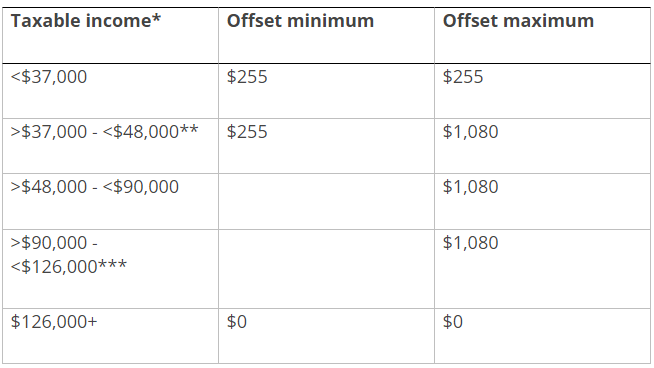September 2019 Edition
In this edition:

Confusion over personal income tax changes - what are you really entitled to?
The recent income tax cuts that passed through Parliament do not mean an automatic $1,080 refund when you lodge your income tax return. The Australian Taxation Office (ATO) has been inundated with calls from taxpayers wanting to know where their money is and how they can access the $1,080 they now believe is owing to them. But it's not quite that straightforward.
What has changed? From 1 July 2018
A low and middle income tax offset (LMITO) that was first introduced in the 2018-19 Federal Budget, provides a tax benefit to those with taxable incomes below $125,333. Recent changes increase the LMITO from a maximum of $530 to $1,080 and the base amount from $200 to $255, and make it applicable to a greater number of taxpayers by increasing the threshold from $125,333 to $126,000.
The first thing to remember is that the government has introduced a tax offset (not technically a "tax cut"). To be eligible for an offset, you need to owe tax. And, if you owe tax, the offset will be first used to reduce the tax you owe. It is not a cash back. The ATO states on its website that "it doesn't mean that you will get an extra $1,080 in your tax return."
The offset applies for a limited time - to the 2018-19, 2019-20, 2020-21 and 2021-22 income years. If you are eligible to receive the offset based on the taxable income you earned last financial year (2018-19), you will receive any offset owing upon lodging your tax return.
The below table summarises how the offset works for the various taxable income brackets.

* Your taxable income is the income you earn less any deductions you claim - not your salary.
** offset entitlement is $255, plus 7.5% of the excess to a maximum of $1,080.
*** offset entitlement is $1,080, less 3% of the excess on taxable income above $90,000.
Impact of the offset in 2018-19:
- Taxable income of less than $21,885: while you are entitled to LMITO of $255, you do not pay personal income tax and therefore cannot utilise the offset.
- Taxable income of $45,000: you will receive a tax reduction of $855 ($255 plus 7.5% on every dollar between $37,000 and $45,000, in this case $8,000). You may also be eligible for the low income tax offset (LITO), see below.
- Taxable income of $85,000: you will receive a tax reduction of $1,080.
The LMITO is in addition to the existing low income tax offset (LITO). The LITO is available to those with taxable income of less than $66,667. The maximum offset is $445 for those with taxable incomes of $37,000 or less. Any amount you earn above $37,000 up to the threshold of $66,667 reduces the offset by 1.5%. Once again, the LITO is a tax offset to reduce the amount of tax you pay. If you do not pay personal income tax, you do not receive the offset as a cash refund.
Changes from 1 July 2022
Two things occur from 1 July 2022:
- Income tax rate thresholds change – the top threshold of the 19% personal income tax bracket increases to $45,000 (currently $37,000), effectively providing a tax cut to all taxpayers earning over $18,200. The tax rate change applies to resident taxpayers and working holiday makers.
- The low-income tax offset (LITO) increases - for those with taxable income of less than $66,667, the LITO base amount will increase from $445 to $700. However, the LITO will reduce quicker than it currently applies with amounts above $37,500 reducing by 5% for amounts up to $45,000, then 1.5% to $66,667.
These changes assume that the Government does not pare back the income tax changes in a future Budget.
Changes from 1 July 2024
From 1 July 2024, the 32.5% marginal tax rate will reduce to 30% and the number of taxpayers it applies to will increase with the maximum threshold moving from $120,000 to $200,000. The tax rate change applies to resident taxpayers and working holiday makers. Once again, this assumes that this tax rate and threshold change is not amended in a future Federal Budget.
Contact us if you have any questions about how these changes affect you.



